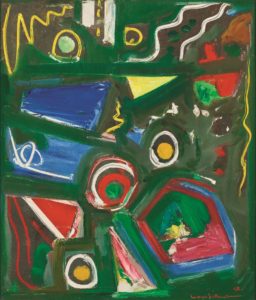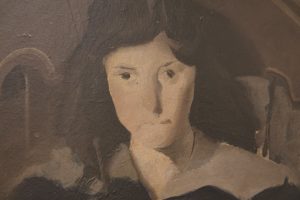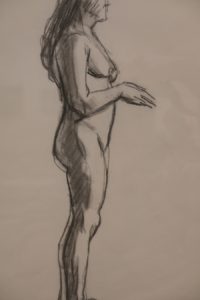Provincetown, the 1950s: Billie Holiday and Barbra Streisand are booked at the Atlantic House. Norman Mailer and Kurt Vonnegut are meeting for cocktails. And Abstract Expressionist Hans Hofmann, considered one of the most influential art educators of the 20th century, is teaching summer school at 76 Commercial St. in the West End.
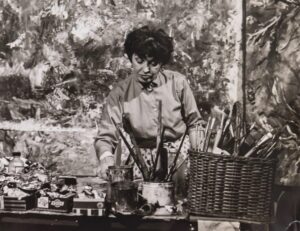
Among his students are several who will become some of the very few women artists of their generation to secure public recognition and critical acclaim. Helen Frankenthaler, Joan Mitchell, Mercedes Matter, and Lee Krasner are his standout students, learning Hofmann’s “push-pull” theory of color emerging and receding from the canvas to create pictorial space. (Krasner, also known as Mrs. Jackson Pollock, is reportedly told by Hofmann that her work is good enough to pass for a man’s.)
Regrettably absent from this short list of luminaries is Mary Rogers, an artist Hofmann called “one of the very outstanding students.” He described her painting as having “a vital sense of space in a formal compositional sense as well as in realization through color.” Rogers studied with Hofmann for eight years.
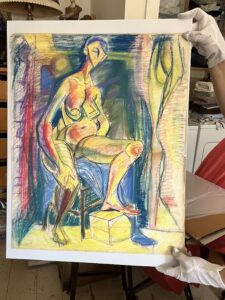
Now, 50 years after her death, Rogers’s work is receiving overdue recognition at an exhibition at the Julie Heller East Gallery. “Mary Rogers (1911-1974): Pure Color and Joy,” continuing through Oct. 3, features a substantial collection of the artist’s oil paintings, watercolors, and charcoal drawings, works held in storage for many years. The show is believed to be the first retrospective since the artist’s passing.
Heller sees Hofmann’s influence across Rogers’s work, particularly in the oils and charcoal drawings and sketches done in his studio.
“That’s Hofmann all over, with the blocks of color, playing one color and one shape against another and with the figures that are semi-abstracted,” Heller says. “You see her playing with the shape, the elongation of the body. It’s not about realism at all. It’s about experimentation, discovery.”
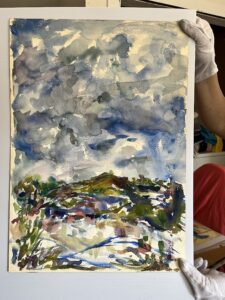
“I do like the work,” says Christine McCarthy, CEO of the Provincetown Art Association and Museum, noting that she had no prior knowledge of the artist. “We learn about Hofmann’s students all the time as there were many.”
Unlike Frankenthaler, Krasner, and other women artists who had proximity to the art world through husbands or fathers, Rogers was the daughter of working-class Irish immigrants who had no specific interest or background in art. Growing up in South Boston, Rogers began drawing and painting at an early age but, like many women of her time, married young and put personal aspirations on hold to raise children. Eventually, she separated from her husband and sent her daughters to boarding school, only then turning her full attention to art.
Rogers studied at the Massachusetts College of Art and the School of the Museum of Fine Arts in the 1940s, and while studying with Hofmann in the 1950s, she began exhibiting her work. Her paintings were shown at festivals and galleries in Boston and elsewhere on the East Coast and were generally well reviewed.
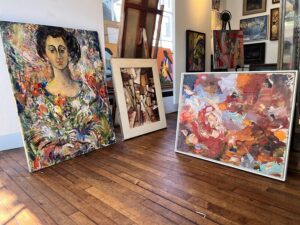
“Her canvases are alive with color and a lyrical, often rapturous response to nature,” a Boston Globe reviewer wrote in 1962 of her work at a gallery on Newbury Street. Today, Rogers’s paintings are included in collections at the Corcoran Gallery in Washington D.C. and at Gracie Mansion in New York City.
The artist makes colors dance, her brushwork fluid and deeply textured. Watercolors, mostly representational landscapes, feature deep shades of blue, green, and ochre. The charcoal sketches have Cubist influences.
In a 1960 interview, Rogers said she was “terribly absorbed” in the task of “bringing form into an absolutely pure essence by means of color, so the form almost seems to vanish, so I have almost pure color.” She believed color to be the “most fleeting” element in nature: “I want to seize it.”
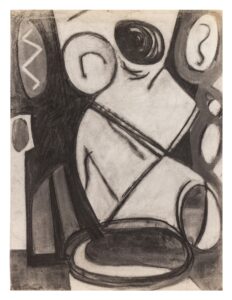
For gallerist Heller, it’s Rogers’s willingness to experiment that is the most enduring and appealing aspect of her work.
“I like that she’s not a Xerox machine, that the pieces don’t all look the same,” Heller says. “In this day and age, artists often need to make money, and they become formulaic. They just repeat variations on the theme. Mary Rogers didn’t. Each painting has its own identity.”
Late Recognition
The Event: “Mary Rogers (1911-1974): Pure Color and Joy”
The time: Through Oct. 3, Friday-Sunday, 2-8 p.m.
The place: Julie Heller East Gallery, 465 Commercial St., Provincetown
The cost: Free


